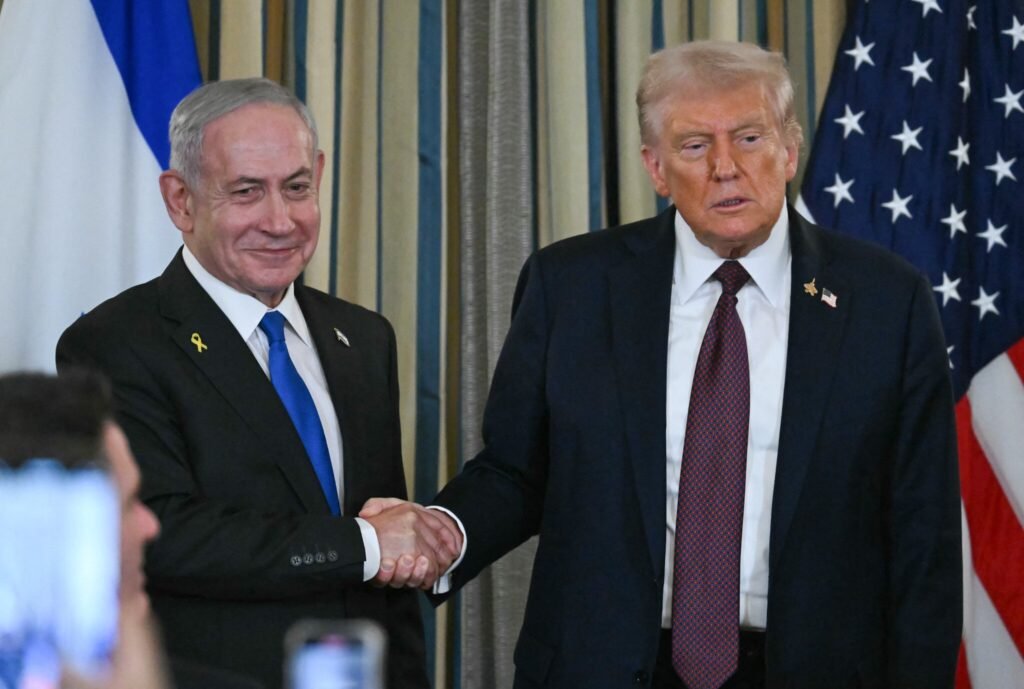US President Trump’s Comprehensive Plan for Gaza Peace: Key Insights and Global Reactions
Overview of President Trump’s Gaza Peace Initiative
In an unprecedented press conference, US President Donald Trump unveiled a comprehensive plan aimed at ending the ongoing conflict in Gaza. Flanked by Israeli Prime Minister Benjamin Netanyahu, Trump revealed that the US is “beyond very close” to reaching a crucial peace agreement after Israel formally endorsed the proposed framework. The plan necessitates the disarmament of Hamas, spearheaded by commitments from Arab and Muslim nations.
Urging Hamas to Accept the Proposals
“Now it’s time for Hamas to accept the terms of the plan we put forward today,” Trump stated confidently, following a lengthy meeting with Netanyahu in the Oval Office. Egyptian and Qatari mediators have since presented the proposal to Hamas, although the timeline for their response remains uncertain. An Arab diplomat speculated it could take several days before a reply emerges.
Breakdown of the 20-Point Plan
The 20-point plan, released just before the press conference, is a streamlined version from a previously discussed 21-point framework. Key aspects include:
- Immediate Hostage Release: If Hamas agrees, all 48 hostages will be released within 72 hours.
- Prisoner Exchange: Israel would free 250 Palestinian prisoners, including women and children.
- International Stabilization Force (ISF): An ISF will be deployed in Gaza to support Palestinian police and ensure security.
The full details are available on The Times of Israel.
Arab and Muslim Nations’ Commitment
Following Trump’s announcement, key foreign ministers from several Arab and Muslim nations—including Saudi Arabia, Jordan, and Egypt—issued a joint statement lauding Trump’s peace efforts and emphasizing their commitment to collaborate in executing the peace plan. This endorsement reflects a significant shift in regional dynamics.
Highlighting Middle East Peace
“This is a big, big day, a beautiful day, potentially one of the great days ever in civilization,” Trump proclaimed, framing this moment as transcending just Gaza. "We’re talking about much beyond Gaza," he continued, indicating a broader vision for peace in the Middle East.
Detailed Features of the Plan
During his prepared remarks, Trump meticulously outlined the proposals aimed at establishing lasting peace:
- Demilitarization of Gaza: Arab and Muslim nations have committed to dismantling the military capabilities of Hamas, which will be monitored by the ISF.
- Phased Israeli Withdrawal: The plan includes a mutually agreed timeline for Israel’s phased military withdrawal, aligning with Netanyahu’s demands.
Trump emphasized, “Israeli security is still going to be involved in Gaza once a deal is reached,” suggesting a collaborative security setup post-conflict.
Challenges Ahead for the Palestinian Authority
While Trump’s plan opens a dialogue for a potential future Palestinian state, it also acknowledges Netanyahu’s strong opposition to immediate statehood. Trump indicated that the Palestinian Authority (PA) must undertake significant reforms to earn its role in Gaza’s governance. “If the Palestinian Authority does not complete the reforms that I laid out in my vision for peace in 2020, they will have only themselves to blame,” Trump stated.
Expanding the Abraham Accords
Trump’s proposal is not limited to Gaza but aims to establish broader regional cooperation. He highlighted the potential for new nations to join the Abraham Accords, asserting that peace with Israel benefits nations economically and politically. “Those who have relations with Israel have thrived, while those who have aimed for its destruction have faced dire consequences,” he noted.
Netanyahu’s Position and Future Challenges
Netanyahu expressed his unwavered support for Trump’s plan while navigating the complexities of his coalition government, many members of which are skeptical about concessions regarding Palestinian statehood. He presented the plan’s principles clearly, emphasizing disarmament and security as paramount.
Summary
President Trump’s proposal marks a significant moment in the long-standing Israeli-Palestinian conflict, aiming at a multi-faceted approach to peace. While garnering support from various nations and attempting to maneuver around internal Israeli politics, the challenges remain high, particularly the need for Hamas’s compliance and the Palestinian Authority’s reform. The world watches closely as the players involved embark on this arduous path to potentially end decades of hostilities.
For further insight into President Trump’s plan and its ramifications, check out additional resources including The Times of Israel and discussions surrounding the Abraham Accords.


